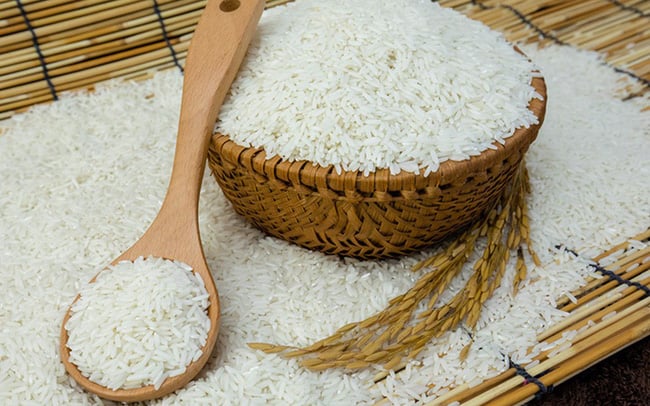November 25, 2025 | 13:29 GMT +7
November 25, 2025 | 13:29 GMT +7
Hotline: 0913.378.918
November 25, 2025 | 13:29 GMT +7
Hotline: 0913.378.918

Rice prices in the Bangladesh market are increasing sharply. Photo: TL.
Bangladesh's National Board of Revenue (NBR) has agreed to cut the tax on imported rice from 25% to 15%, according to the Vietnam Industry and Trade Center (VITIC). The new tariff level is in force until the end of October.
The information is what caused a 10% rise in the price of non-basmati rice, India's premium rice, in only three days (August 15-17). As a result, the price increased to 35 rupees from 32 rupees.
The decision was taken in response to a request by Bangladesh's Food Ministry. The government is encouraging companies to import rice in order to maintain local rice prices at a level that will have a minimal effect on people's standard of living.
Last December, Bangladesh lowered the tax on imported rice from 62.5 percent to 25%, aiming to avert a rise in rice prices.
According to the Bangladesh Trade Corporation (TCB), the price of raw rice in July rose by 4% on a monthly basis, to an average of 44 takas per kg, 38% more than the price of rice imported from India.
Prices continued to rise in August, with mid-August raw rice in Dhaka costing 46-50 takas per kg, up from 44 takas a month earlier; medium milling rice costs 50-60 takas per kg, while improved rice costs 65-78 takas per kg.
Bangladesh produced 38.6 million tons of rice in the 2020-2021 crop year, an increase of more than 6% over the previous harvest. Rice consumption is about 34 million tons per year.
Bangladesh is Vietnam's sixth-largest rice export market. Vietnam sold almost 53,000 tons of rice to Bangladesh in the first seven months of this year, worth USD 32 million, a rise of 9,323 % in volume and 10,972 % in value.
Translated by Linh Linh

(VAN) An Giang promotes supply-demand connections, standardizes quality and builds value chains, creating a foundation for sustainable bird’s nest development and aiming to expand exports.
/2025/11/24/5339-4-nongnghiep-075331.jpg)
(VAN) Recently, the conference on 'Sustainable Fisheries Linkage Chain - Tilapia for Export' took place in Tien Hai commune, Hung Yen province.
/2025/11/21/4309-2-153400_128.jpg)
(VAN) Green and low-emission rice is paving the way for Vietnamese rice to enter high-end markets, marking the beginning of a transformation journey toward greening and elevating the national rice brand.

(VAN) ‘Right to Win’ outlines a national action plan that shapes a new vision for Viet Nam’s agriculture in an era of renewal and global integration.

(VAN) Lam Dong’s farmed sturgeon output this year is expected to reach 2,300 tons, worth VND 450 billion, affirming the brand’s position on the market.

(VAN) A surge in Ukrainian egg exports, largely driven by soaring sales to the UK over the last few years, has notably pushed up egg prices on the domestic market.

(VAN) The price of Arabica Catimor coffee in Quang Tri is currently at VND 25,000–27,000/kg (fresh cherries), the highest level ever recorded